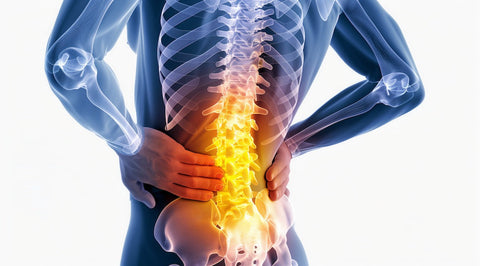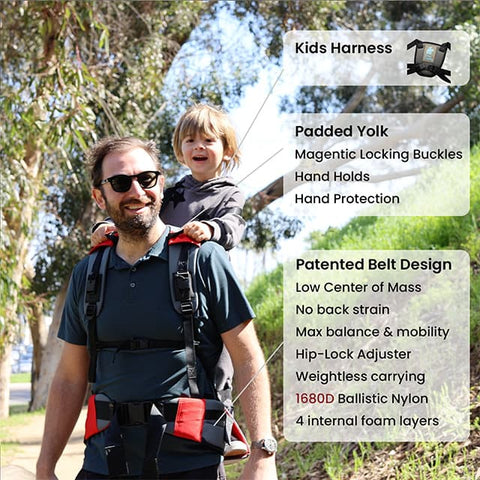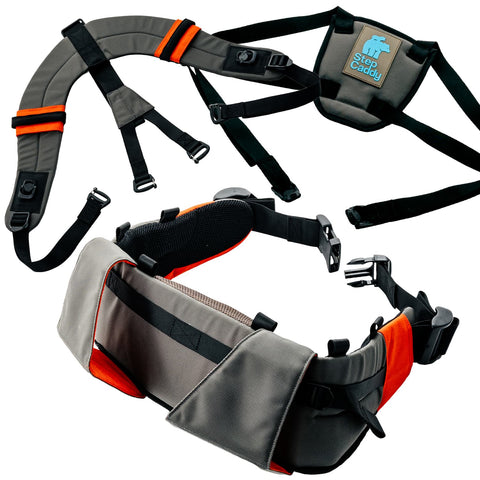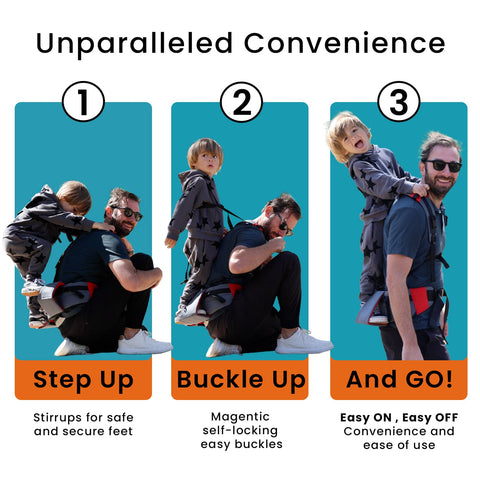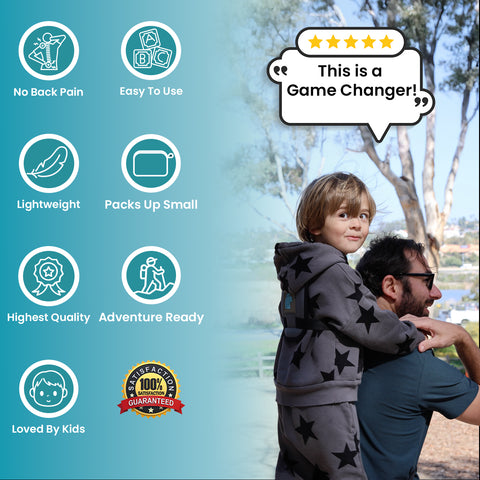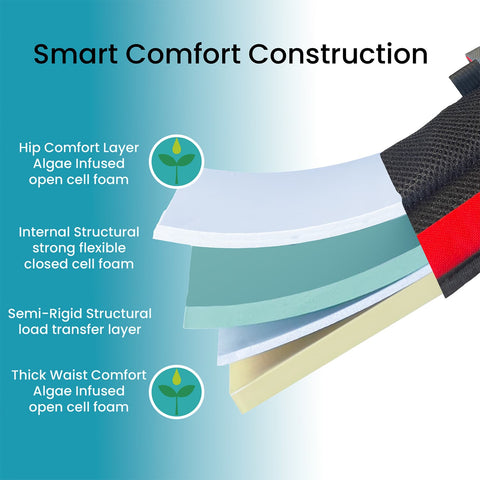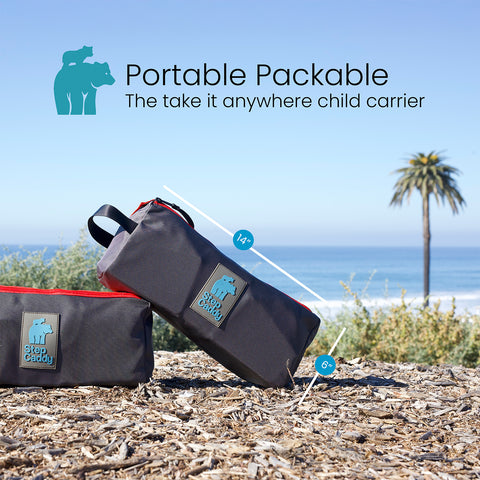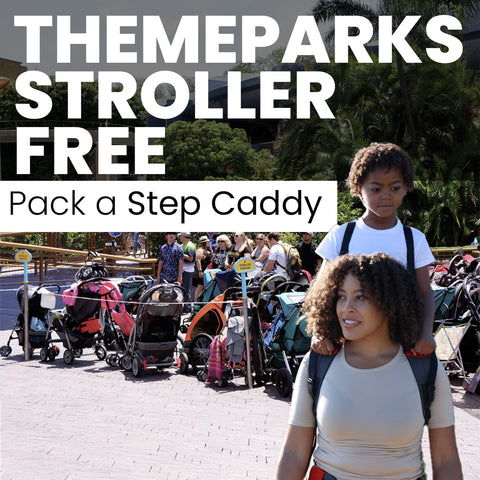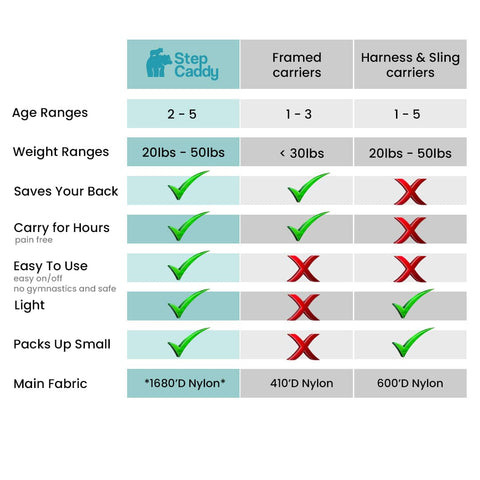Carrying Stuff is a Universal Struggle
Carrying things has been a fundamental human activity since time immemorial. Whether it's Neanderthals lugging around firewood, medieval knights hauling chainmail, or modern parents strapping a squirming toddler to their chest while also carrying groceries, we've all been there. And let's be honest—carrying things wrong is a universal experience too.
Enter the glorious load-bearing waist belt, the unsung hero of backpacks and baby carriers. This simple strap, often overlooked for flashy zippers and fancy padding, can save your shoulders, align your spine, and prevent you from walking like a hunchbacked gremlin after an hour of carrying your kid.
Before we dive into the biomechanics, let's take a moment to appreciate how far we've come in the art of carrying stuff.
The Evolution of Toddler Carriers: From Tied-Up Towels to High-Tech Harnesses
Humans have been strapping babies onto themselves for thousands of years, mainly because small children are terrible at walking long distances and even worse at following directions.
- Ancient Baby Transport: Indigenous cultures figured out early on that a simple piece of fabric was enough to secure a child to their back, leaving their hands free for hunting, gathering, or frantically shooing away wild animals. African kanga wraps, Asian mei tais, and Native American cradleboards were all early versions of ergonomic babywearing.
- The Medieval Struggle: Medieval peasants didn't have strollers (shockingly!), so babies were often carried in slings or wraps. Not the most biomechanically sound, but they were busy avoiding knights and surviving the plague to worry about lumbar support.
- The 20th Century Glow-Up: In the 1970s, baby carriers got an upgrade with padded straps and buckles, paving the way for today's ergonomic designs. These modern marvels not only secure your child like a tiny, adorable astronaut in a harness but also protect your back from becoming your favorite thing to complain about.
That brings us to today, when load-bearing waist belts have revolutionized the way we carry toddlers, making life more enjoyable and adventurous with less pain and hassle.
Biomechanical Benefits: How a Waist Belt Saves Your Back
At first glance, a waist belt on a backpack or baby carrier doesn't look like much. It's just a colorful Santa Belt. Wrong. This not-so-simple piece of stomach-obfuscating fabric is a biomechanical game-changer, but (and it's a big but) it only works if the weight is properly transferred to it.
Yes, the waist belt is only as effective as the system that feeds weight into it. The point at which your child's weight attaches to you is the Weight Transfer Point. Ideally, this would be at your hips: the strongest Avenger, but it is usually higher up your back and, in some cases, even your shoulders. You need a system that takes the weight from the child's 'center of mass' to a 'weight transfer point' that should be on your hips. Thus, if the carrier's internal structure isn't designed to transfer the weight downward before it touches your spine or shoulders, guess what? Your kid's entire weight is still yanking down on your traps, no matter how much you cinch that stylish, pocket-riddled, wireless charging, ai-ready waist belt.
1. Weight Distribution: If the Structure Is Wrong, Your Back Pays the Price
Without a waist belt, all the weight from your baby carrier rests on your shoulders, slowly compressing your spine into oblivion. Ever seen someone carrying a heavy load without the right support? They lean forward like a human question mark, asking themselves "when did they get this heavy?"
When a waist belt does its job correctly, the weight goes directly to the hips, avoiding that forward-leaning "hiker's hunch" and the silent cursing of your life choices.
2. Weight Positioning: Stability, Avoid the Wobbles
While the waist belt is the hero of our story, it can't do it all alone - it's not Batman. Not only does the weight have to be appropriately transferred to the waist, but it also has to be well positioned in the first place. Where your load sits matters (not an intentional pun). A higher center of mass (like carrying a child too high on your chest or shoulders) raises the whole center of mass of the system (aka you). Equally, having the child too far lateral means a combined center of mass away from your centerline, throwing off balance. So, where is the sweet spot? It's the hips. The hips are your center of mass, so you want the child's center of mass to be as close to yours as possible. Since their 'center of mass' cannot be on the hips, the best thing we can do is have the 'transfer-of-weight' point on the hips. By keeping the child's position close to your vertical centerline and the 'transfer-of-weight' point close to your center of mass, you stay balanced and not wobble like a Jenga tower at a cocktail party. A well-structured and designed carrier keeps your center of gravity where it should be, making movement easier, safer, and significantly less awkward.
Bottom Line: Design Matters!
A waist belt alone won't magically fix your back pain—it has to be part of a properly designed system.
So, when choosing a carrier, look for one with:
- A low center-of-mass combined with a low 'weight transfer point'. Locate where the toddler's center will be. Ensure it is not too high, too far forward, or to the side.
- A rigid or semi-rigid internal structure that directs the weight flow from the 'weight transfer point' toward the waist belt.
- Firm waist padding to absorb and distribute the pressure evenly across your hips, rather than concentrating it on a small, painful area.
Health Advantages: Because Your Future Self Will Thank You
If you value your spine and would like to avoid becoming best friends with a chiropractor, here's why waist belts matter.
1. No More Shoulder and Back Pain
If you've ever carried a heavy backpack without a waist belt, you know the pain—a dull, nagging ache in your shoulders that makes you question all your life choices. A properly fitted waist belt removes up to 80% of the weight from your shoulders, letting your legs (the MVPs of weight-bearing) do the hard work.
2. Long-Term Injury Prevention
Constant strain on your spine and shoulders isn't just uncomfortable—it's a long-term ticket to chronic pain town. P or load distribution can lead to compressed nerves, misaligned vertebrae, and an unintentional Quasimodo aesthetic. A waist belt reduces this risk, meaning you can still enjoy standing upright in your golden years.
Load Placement: Carrying Without Toppling Over
1. The High vs. Low Load Debate
Where your load sits matters. A higher center of mass (like carrying a child too high on your chest or a backpack riding up your shoulders) throws off your balance and increases strain. On the flip side, a load that is too low drags you down and is likely to bash the back of your legs.
The sweet spot? Somewhere around your lower back and hips.
2. The Weight Transfer Point: Why Hips Are the MVP
If you've ever worn a well-designed backpack or baby carrier, you'll notice something magical—the moment you tighten the waist belt, it feels like you're carrying less weight. That's because your hips are literally built for load-bearing, unlike your poor, overworked shoulders.
Practical Applications: Where Waist Belts Make Life Better
1. Backpacks: Saving Students and Hikers Everywhere
If you're a student, hiker, or anyone forced to carry an unholy amount of stuff, a waist belt is your best friend. It keeps your spine in check and prevents the dreaded "backpack slouch", where your posture degrades with each passing step.
2. Toddler Carriers: Because Kids Get Heavy
Let's face it—babies start off light, but before you know it, they weigh as much as a sack of potatoes. A good baby carrier with a waist belt prevents the slow, inevitable spinal collapse that happens when you carry a toddler without support.
Final Thoughts: Buckle Up, Your Back Will Thank You
The humble waist belt may not be glamorous, but it's a biomechanical lifesaver. Whether you're carrying textbooks, camping gear, or a wiggling toddler, it keeps you stable, reduces strain, and prevents you from walking like a human question mark.
So next time you put on a backpack or strap your kid into a carrier, tighten that waist belt with the satisfaction of a good purchase. Your spine (and future self) will thank you.

